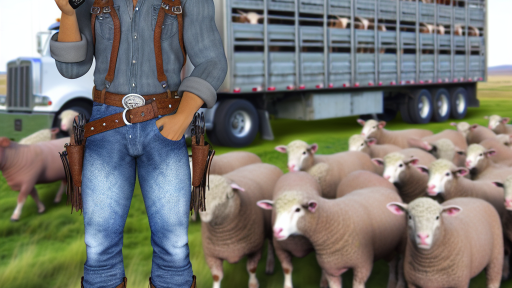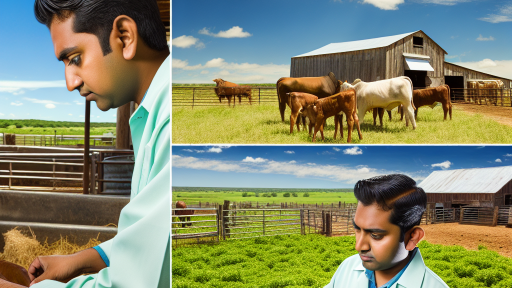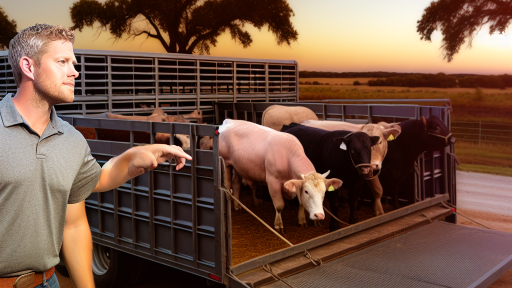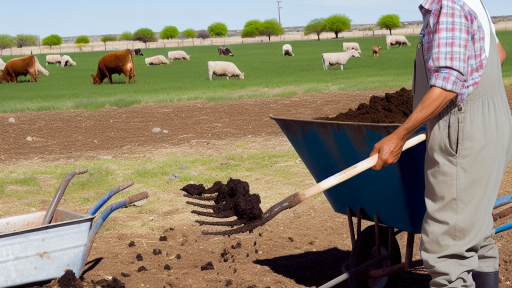Importance of Cleanliness in Livestock Housing
Health of Livestock
Cleanliness directly affects the health of livestock.
Regular cleaning reduces the risk of disease.
Healthy animals produce better quality products.
Additionally, it promotes animal welfare.
Farmers who prioritize cleanliness see fewer health issues.
Productivity and Growth
A clean environment enhances livestock productivity.
Animals in clean housing grow faster and are more productive.
This translates to higher profitability for farmers.
Moreover, cleanliness can lead to better feed conversion rates.
Consequently, farmers benefit from improved economic returns.
Environmental Considerations
Maintaining cleanliness helps protect the environment.
Proper waste management reduces pollution risk.
This protects local water sources from contamination.
Furthermore, it promotes sustainable agricultural practices.
Caring for the environment supports long-term farming viability.
Transform Your Agribusiness
Unlock your farm's potential with expert advice tailored to your needs. Get actionable steps that drive real results.
Get StartedRegulatory Compliance
Cleanliness ensures compliance with agricultural regulations.
Producers face regulations designed to protect both animals and consumers.
Non-compliance can lead to hefty fines and legal issues.
Thus, maintaining cleanliness is not just beneficial; it’s necessary.
Proactive measures can prevent costly repercussions.
Common Sources of Contamination in Livestock Housing
Animal Waste
Animal waste is a primary source of contamination in livestock housing.
It contains harmful bacteria and pathogens.
Therefore, effective waste management is essential.
Regular cleaning schedules prevent buildup.
Proper disposal methods further reduce risks.
Feed and Water Contamination
Feed and water sources can become contaminated easily.
Spilled feed attracts pests and rodents.
In addition, contaminated water can spread diseases.
Ensure feed and water areas are kept clean and monitored.
Using clean containers prevents contamination.
Pest Invasion
Pests are significant contributors to contamination in housing.
Rodents and insects can carry harmful diseases.
Regular inspections help to identify and control infestations.
Implementing pest control measures is crucial.
Proper sealing of the housing can deter pests.
Environmental Contaminants
Airborne contaminants can enter livestock housing easily.
Pollen, dust, and chemicals may affect animal health.
Regular ventilation reduces these risks significantly.
Incorporating air filtration systems also helps.
Showcase Your Farming Business
Publish your professional farming services profile on our blog for a one-time fee of $200 and reach a dedicated audience of farmers and agribusiness owners.
Publish Your ProfileMonitor air quality regularly for optimal conditions.
Equipment and Tools
Dirty equipment and tools are often overlooked sources of contamination.
Improperly cleaned tools can harbor pathogens.
Establish a routine cleaning schedule for all equipment.
Use designated tools for specific tasks to prevent cross-contamination.
Inspect equipment regularly to ensure cleanliness.
Best Practices for Daily Cleaning Procedures
Establish a Cleaning Schedule
Creating a cleaning schedule ensures consistency and accountability.
Assign specific tasks to team members each day.
This routine helps maintain hygiene in livestock housing.
Use Appropriate Cleaning Tools
Select tools that effectively remove waste and contaminants.
Consider using brooms, scrapers, and high-pressure washers.
These tools facilitate easier handling and thorough cleaning.
Invest in Quality Cleaning Supplies
Choose disinfectants suited for agricultural settings.
Make sure the products are safe for livestock and effective against pathogens.
Regularly restock supplies to avoid running out during cleaning times.
Implement Waste Management Practices
Develop a waste disposal plan to manage manure and bedding.
Regularly remove waste from the barn to prevent buildup.
Utilize composting or safe disposal methods for manure.
Conduct Routine Inspections
Perform inspections to identify cleanliness issues promptly.
Check for signs of pests or buildup in less visible areas.
Address any problems before they escalate into larger issues.
Train Staff on Cleaning Procedures
Provide training sessions to educate staff on effective cleaning techniques.
Ensure everyone understands the importance of cleanliness.
This fosters a culture of hygiene within the facility.
Utilize Checklists for Cleaning Tasks
Create checklists to streamline the cleaning process.
Checklists help staff remember necessary tasks and details.
Regularly update these lists based on evolving needs.
Monitor Livestock Health
Regularly observe animal behavior and health for signs of illness.
Alert the veterinarian to any health concerns associated with housing cleanliness.
Healthy animals reflect the effectiveness of cleaning protocols.
Review and Adjust Procedures Regularly
Periodically evaluate the cleaning procedures in place.
Seek feedback from staff on the effectiveness of current practices.
Make adjustments as necessary to enhance cleanliness and efficiency.
Delve into the Subject: Sustainable Practices in Livestock Handling and Transport
Effective Waste Management Strategies
Understanding Waste Types
Livestock waste varies in type and composition.
Manure, bedding, and feed residues are common byproducts.
Knowing the types of waste helps in managing them effectively.
Utilizing Composting Techniques
Composting converts organic waste into valuable fertilizer.
This process reduces volume and eliminates pathogens.
Additionally, composting improves soil quality over time.
Showcase Your Farming Business
Publish your professional farming services profile on our blog for a one-time fee of $200 and reach a dedicated audience of farmers and agribusiness owners.
Publish Your ProfileSet up compost bins close to livestock housing for convenience.
Implementing Manure Management Systems
Proper manure management prevents environmental contamination.
Consider using liquid systems for easier handling.
Solid systems work well for large-scale operations.
Regularly monitor and adjust these systems as needed.
Practicing Regular Cleaning Routines
Establish daily and weekly cleaning schedules.
Ensure all staff members are trained in best practices.
Use appropriate tools for efficient cleaning processes.
Daily task checklists help maintain consistency.
Utilizing Technology for Waste Management
Implementing technology can enhance waste management efficiency.
Automated systems can handle waste removal effectively.
Consider using sensors to monitor waste levels in real-time.
These technologies can minimize labor and maximize output.
Educating Staff on Best Practices
Education is critical for effective waste management.
Conduct regular training sessions for all employees.
Share updates on best practices and new technologies.
A knowledgeable team leads to better waste management outcomes.
Delve into the Subject: Livestock Breeding Best Practices for Farmers
Choosing Suitable Bedding Materials and Their Maintenance
Understanding Bedding Types
Choosing the right bedding material is essential for livestock health.
Different types of bedding serve various purposes.
For example, straw is soft and absorbent.
Wood shavings provide good insulation and comfort.
Additionally, sand is easy to clean and maintain.
Evaluating Absorbency
Absorbency is a critical factor when selecting bedding.
Highly absorbent materials help control moisture levels.
This is crucial for preventing bacterial growth.
Moreover, moisture control enhances overall hygiene.
Cost-Effectiveness and Availability
Consider the cost and availability of bedding options.
Local materials often reduce transportation costs.
In addition, bulk purchasing can lead to significant savings.
Choosing affordable bedding improves overall profitability.
Regular Maintenance Practices
Proper maintenance keeps the bedding effective and hygienic.
Regularly remove soiled bedding to prevent odors.
Incorporate fresh bedding frequently for comfort.
Establish a cleaning schedule for consistency.
Environmental Considerations
One should also consider the environmental impact of bedding materials.
Compostable options contribute to sustainability.
Recycling bedding can create useful by-products.
This practice supports a circular economy in agriculture.
Find Out More: Regulatory Compliance and Standards in Aquaculture
Showcase Your Farming Business
Publish your professional farming services profile on our blog for a one-time fee of $200 and reach a dedicated audience of farmers and agribusiness owners.
Publish Your Profile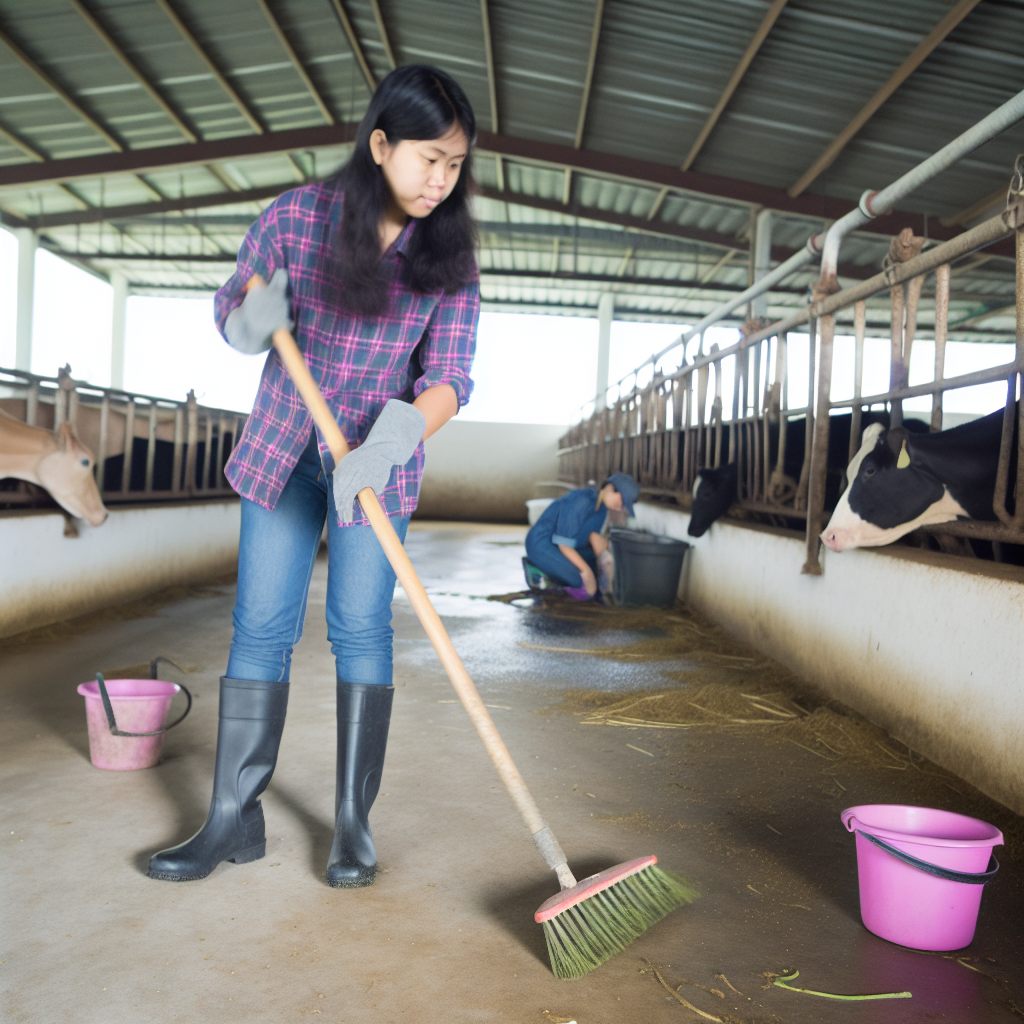
Regular Sanitation Protocols for Equipment and Tools
Importance of Regular Cleaning
Regular cleaning of equipment and tools is essential for livestock health.
It reduces the risk of disease transmission among animals.
Moreover, clean tools enhance the efficiency of daily operations.
Establishing Cleaning Routines
Begin by creating a detailed cleaning schedule.
Assign specific tasks to staff members each week.
Include daily, weekly, and monthly cleaning activities.
Daily Cleaning Tasks
Every day, check and clean feeders and waterers.
Remove any leftover feed to prevent pests.
Inspect tools for signs of dirt or damage.
Weekly Cleaning Tasks
During the week, wash and disinfect equipment thoroughly.
Use appropriate cleaning solutions for different tools.
Ensure you rinse off chemicals completely.
Monthly Cleaning Tasks
Each month, perform a deep clean of all equipment.
Disassemble tools when necessary for thorough cleaning.
Additionally, check for wear and tear on items.
Choosing Proper Cleaning Supplies
Select cleaning supplies that are safe and effective.
Use disinfectants that are proven to kill pathogens.
Always follow manufacturer instructions for use.
Training Staff on Sanitation Protocols
Educate staff on the importance of sanitation.
Provide training on proper cleaning techniques.
Regularly review sanitation policies during meetings.
Monitoring and Improving Practices
Continuously assess sanitation practices for effectiveness.
Encourage feedback from staff on cleaning processes.
Stay updated on new techniques and products in the industry.
Learn More: Choosing the Right Exotic Livestock for Your Farm
Implementing Pest Control Measures
Importance of Pest Control
Pest control plays a crucial role in livestock housing.
It helps maintain animal health and productivity.
Moreover, effective pest management prevents disease transmission.
Ultimately, healthy livestock leads to better economic outcomes.
Identifying Common Pests
Farmers must identify common pests in livestock housing.
These may include rodents, flies, and beetles.
Understanding pest behavior helps in implementing effective control strategies.
Preventive Measures
Implementing preventive measures is vital to managing pests.
Regular cleaning reduces pest habitats significantly.
Furthermore, proper waste management is essential.
Ensuring that feed is stored securely prevents rodent infestations.
Installing physical barriers, like screens, can deter pests.
Biological Control Methods
Biological control methods offer sustainable pest management options.
Introducing natural predators helps control pest populations.
For instance, using parasitic wasps can reduce fly numbers.
Showcase Your Farming Business
Publish your professional farming services profile on our blog for a one-time fee of $200 and reach a dedicated audience of farmers and agribusiness owners.
Publish Your ProfileAdditionally, promoting biodiversity in the area can be beneficial.
Chemical Control Options
Chemical control can be effective but requires careful consideration.
Farmers should choose pesticides with low toxicity to livestock.
Always follow label instructions to ensure safe application.
Regularly assessing the effectiveness of chemicals is critical.
Monitoring and Evaluation
Regular monitoring helps track pest control effectiveness.
Farmers should document pest sightings and control measures implemented.
Evaluating results enables adjustments to pest management strategies.
Continuous improvement ensures long-term pest management success.
Monitoring and Assessing Livestock Health Related to Cleanliness
Understanding the Importance of Cleanliness
Cleanliness plays a vital role in maintaining livestock health.
It directly impacts their overall well-being and productivity.
Dirty living conditions can lead to disease outbreaks.
Additionally, cleanliness reduces stress levels in animals.
Regular Health Monitoring
Regular health checks are essential for livestock success.
Routine assessments help identify issues early.
Farmers should check for signs of illness frequently.
These checks can include monitoring appetite and demeanor.
Sufficient training ensures accurate reporting of concerns.
Assessment of the Living Environment
The housing environment significantly affects livestock health.
Farmers must monitor bedding quality and cleanliness levels.
Regular cleaning routines should be established and followed.
This minimizes exposure to pathogens and harmful bacteria.
Moreover, adequate ventilation is crucial to reduce humidity.
Utilizing Technology for Health Monitoring
Technological advancements can enhance livestock health management.
Farmers can employ sensors to track environmental conditions.
Smart cameras can monitor animal behavior over time.
This facilitates early detection of health issues.
Utilization of apps simplifies reporting and record-keeping.
Feedback from Veterinary Professionals
Regular consultations with veterinarians are beneficial.
Veterinarians can offer valuable insights into livestock health.
They help assess the effectiveness of cleanliness measures.
Furthermore, they provide additional strategies for improvement.
Engaging with vets promotes adherence to health standards.
Additional Resources
Animal Welfare Act | National Agricultural Library
Guide for the Care and Use of Laboratory Animals, 8th edition …

